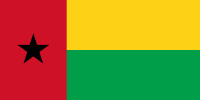
Photo from wikipedia
Christoph Kohl’s A Creole Nation: National Integration in Guinea-Bissau addresses the issue of creolization, which has become an important topic in linguistic, anthropological, and cultural studies since its inception in… Click to show full abstract
Christoph Kohl’s A Creole Nation: National Integration in Guinea-Bissau addresses the issue of creolization, which has become an important topic in linguistic, anthropological, and cultural studies since its inception in the 1950s. It is an appealing subject, which has over time become associated with crosscultural interaction across the globe, emanating from the study of the Caribbean’s cultural heritage. West Africa has for decades constituted a niche in creole studies, mainly promoted by anthropologists and creolists. Besides creole languages with an English lexicon, such as Krio in Sierra Leone and Aku in the Gambia, the case of creole tongues with a Portuguese lexicon in Cape Verde (Kriolu) and Guinea-Bissau (Kriol) has attracted considerable attention. In this respect, the work by the anthropologist Wilson Trajano Filho stands out. Applying the notion of overlapping processes of cultural creolization in Guinea-Bissau and the Lower Casamance in current Senegal from the 1300s onward, Trajano Filho laid the groundwork upon which Christoph Kohl built his analysis of the formation of a “Creole Nation.” Jacqueline Knörr’s concept of cultural pidginization or trans-ethnicization, based on her field research in Sierra Leone, serves as a complementary epistemological thread for this study. In under 200 pages, Kohl’s dense writing compresses a wealth of information on the dynamics of cultural creolization and pidginization in the region, taking the reader on a guided tour of cross-cultural change, past and present. Kohl’s book is divided into three chapters. The first, “Guinea Bissau: a Creole Nation?” gives an outline of his working hypothesis; the second, “Creole identity in Guinea-Bissau,” discusses the different “creole” strata and their trans-ethnicization over time; and the third centers on the dynamics of creolization for “Building the Nation” and its significance for current-day Guinea-Bissau. The core of the author’s research is formed by 133 interviews with representatives from the country’s “creole society,” based upon multi-sited fieldwork conducted in some of the country’s main urban centers (Bissau, Bafatá, Cacheu, Farim, Geba, and Bolama) and the town of Ziguinchor in Senegal. Complemented by personal observations,
Journal Title: African Studies Review
Year Published: 2020
Link to full text (if available)
Share on Social Media: Sign Up to like & get
recommendations!